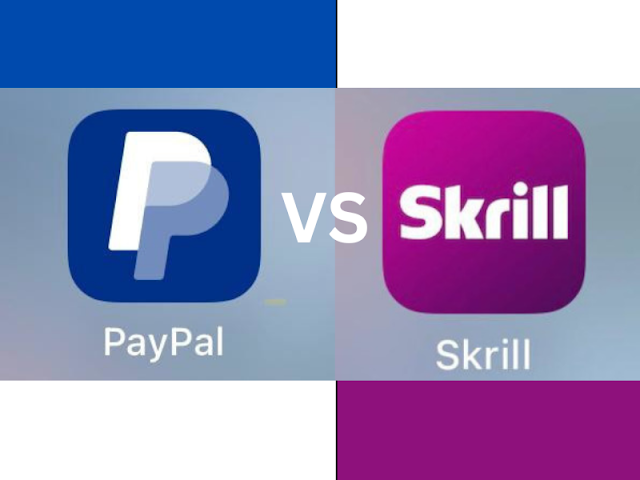PayPal vs Skrill
A Comprehensive Comparison of Two Popular Payment Gateways
Introduction
In the rapidly evolving world of online transactions, the importance of secure and efficient payment gateways cannot be overstated. PayPal and Skrill are two prominent players in this arena, offering individuals and businesses seamless methods for sending and receiving money globally. In this article, we will delve into the features, benefits, and drawbacks of PayPal and Skrill, enabling you to make an informed decision when choosing a payment gateway.
1: User-Friendliness
When it comes to user-friendliness, both PayPal and Skrill excel in their own ways. PayPal is widely recognized for its simplicity, making it a popular choice among individuals and small businesses. Its intuitive interface, smooth navigation, and seamless integration with various platforms make it easy for users to send and receive payments.
On the other hand, Skrill offers a user-friendly experience as well, with a sleek interface and straightforward setup process. However, Skrill might require some additional steps for verification, which can be a bit more time-consuming compared to PayPal.
2: International Reach
Both PayPal and Skrill have a robust worldwide presence, permitting users to ship and get hold of bills in more than one currency. PayPal supports transactions in over 200 international locations and accepts bills in greater than a hundred currencies, making it a particularly versatile choice for global transactions.
Skrill, while not as widespread as PayPal, also offers a global reach, serving customers in over 120 countries and supporting 40 different currencies. Skrill's focus on emerging markets has made it a preferred choice in regions where PayPal may have limited availability.
3: Fees and Charges
Understanding the fees and charges associated with a payment gateway is crucial for businesses and individuals managing their finances. PayPal and Skrill have different fee structures, so it's important to consider these variations.
PayPal charges a fee for receiving payments, which typically ranges from 2.9% to 4.4% plus a fixed fee per transaction, depending on the country. Additionally, there may be cross-border fees for international transactions. PayPal also offers merchant solutions with more competitive rates for businesses with higher transaction volumes.
Skrill, on the other hand, charges lower transaction fees compared to PayPal. The fees generally range from 1.45% to 3.99%, plus a fixed fee per transaction. Skrill also offers reduced fees for high-volume users and VIP clients.
4: Security and Buyer Protection
On the subject of online transactions, safety is of paramount importance. Both PayPal and Skrill employ robust security measures to protect user data and prevent fraudulent activities.
PayPal has a strong reputation for security, utilizing encryption technology and advanced fraud prevention tools to safeguard transactions. PayPal's buyer protection program offers a safety net for buyers, providing refunds in case of unauthorized transactions or undelivered items.
Similarly, Skrill implements high-level security protocols, including two-factor authentication and transaction monitoring systems. While Skrill does not have a dedicated buyer protection program like PayPal, it does offer a dispute resolution process to help users resolve issues with transactions.
5: Integration and E-commerce Support
When it comes to integration with various e-commerce platforms, PayPal is widely recognized for its extensive compatibility. It seamlessly integrates with popular platforms like Shopify, WooCommerce, and Magento, making it easy for businesses to incorporate PayPal as their payment gateway.
Skrill also offers integration options for e-commerce platforms, although it may have fewer options compared to PayPal. However, Skrill's APIs and developer resources allow businesses to integrate Skrill into their websites or applications effectively.
Note: Please must visit both websites always before proceeding because companies update comes from time to time.
Conclusion
In the PayPal vs Skrill battle, both payment gateways offer distinct advantages and cater to different user needs. PayPal is renowned for its user-friendliness, international reach, and extensive e-commerce integration options. Skrill, on the other hand, offers competitive fees, strong security measures, and a focus on emerging markets.
Ultimately, the choice between PayPal and Skrill depends on your specific requirements, geographic location, and transaction volumes. It's advisable to evaluate their features, fees, and available services in light of your business or personal needs to make an informed decision.
Remember, whether you choose PayPal or Skrill, both options provide reliable and efficient payment solutions, empowering individuals and businesses to transact securely in the digital realm.


